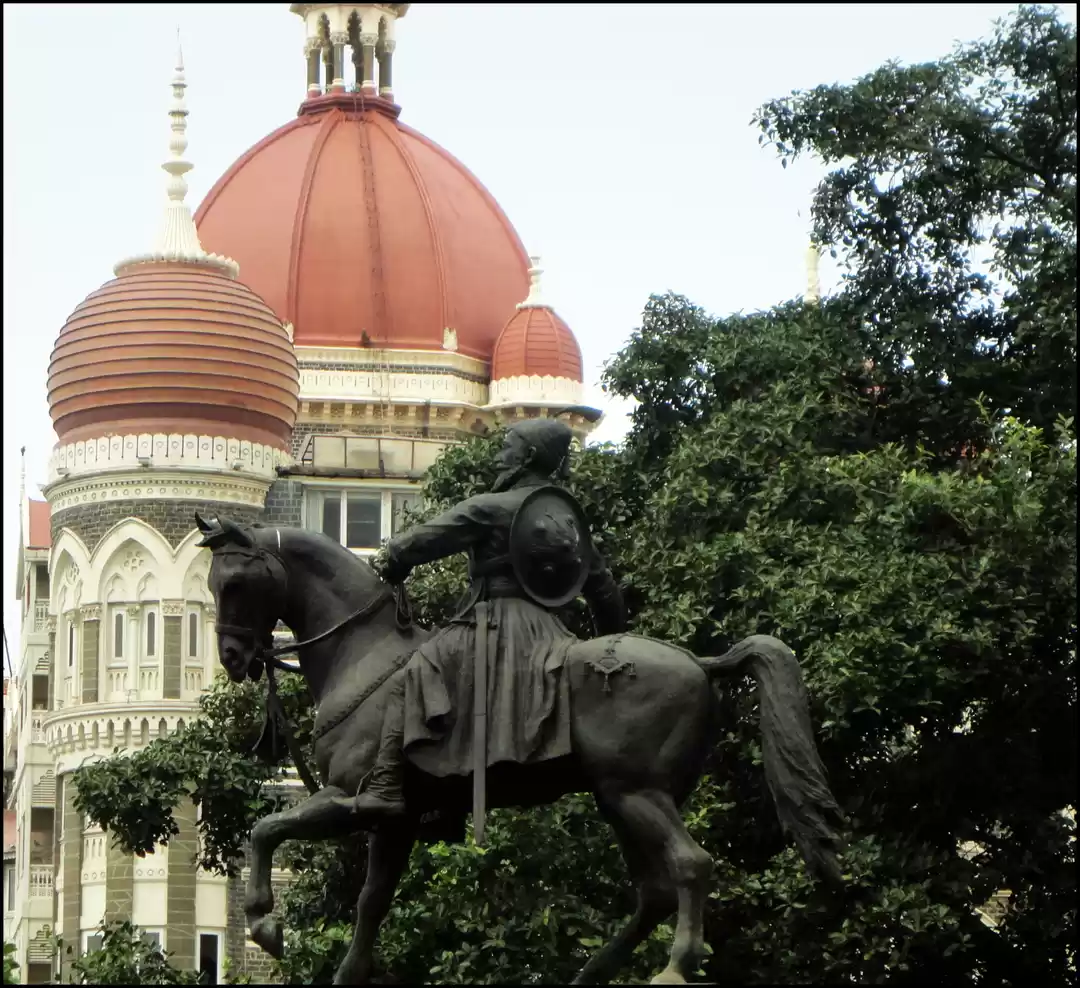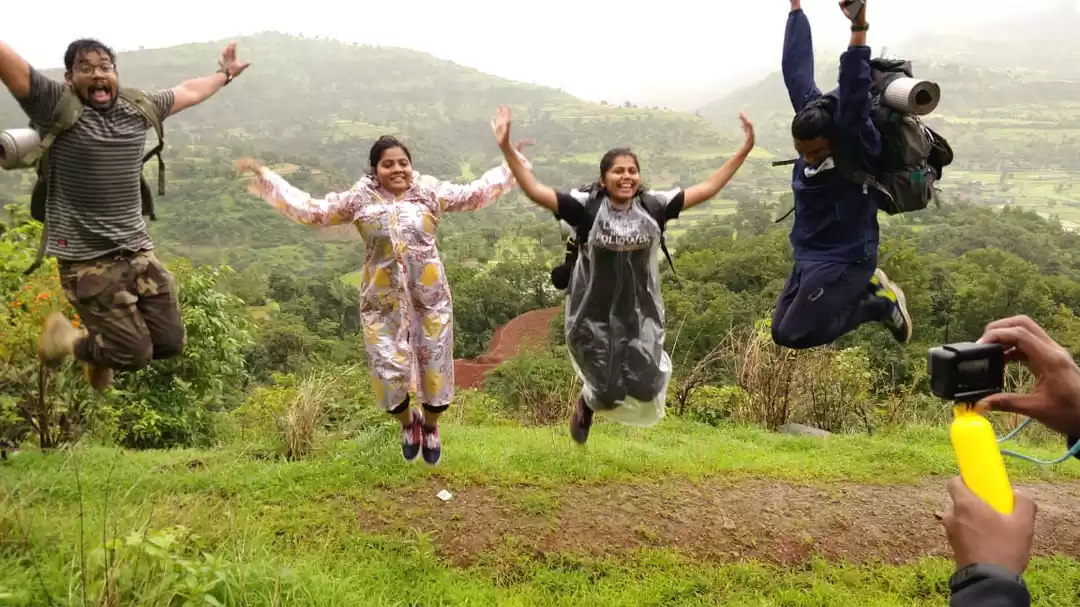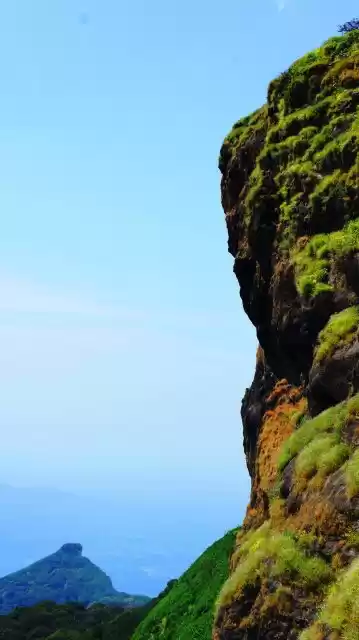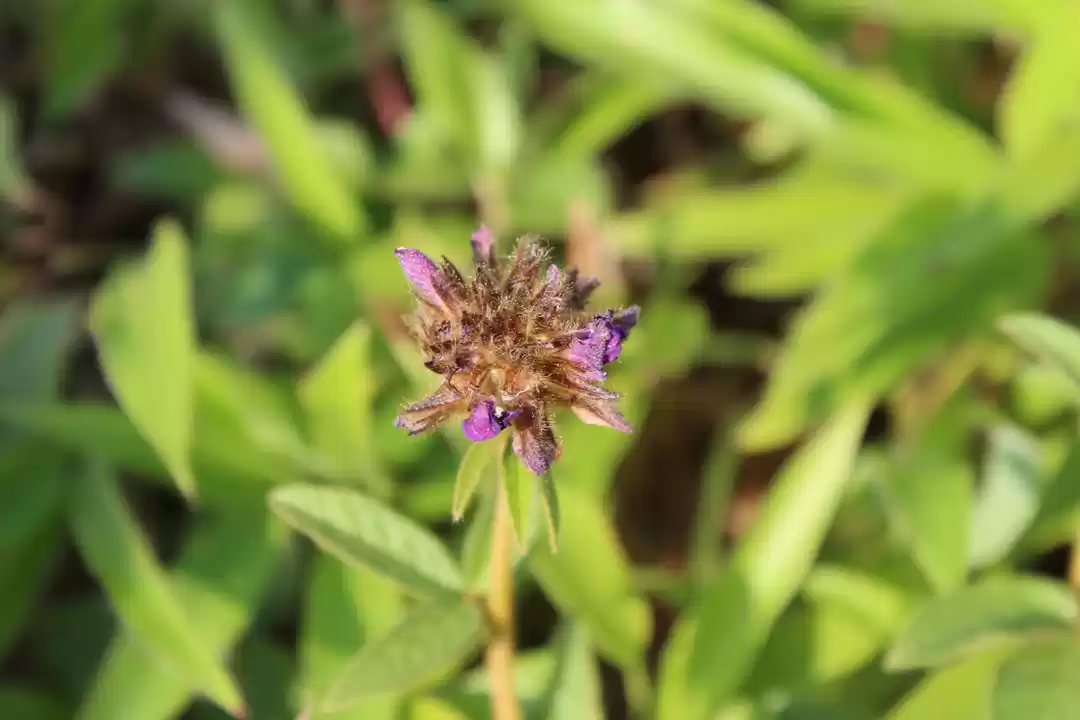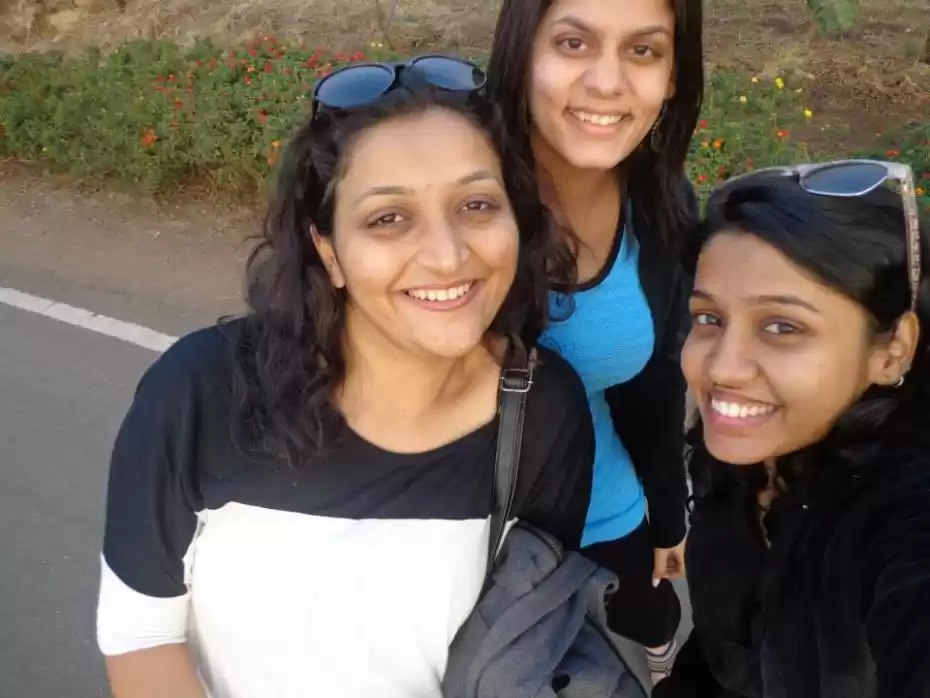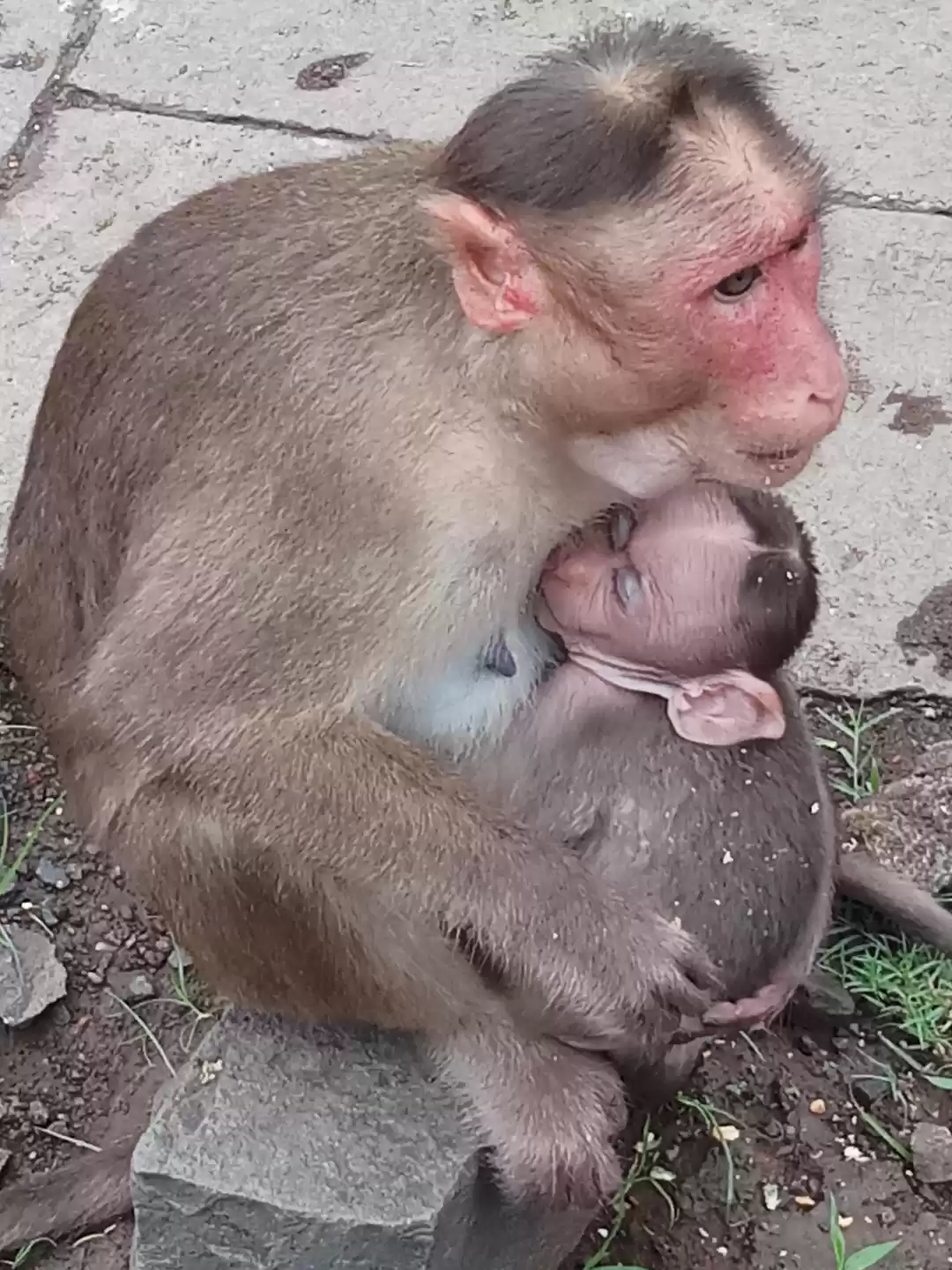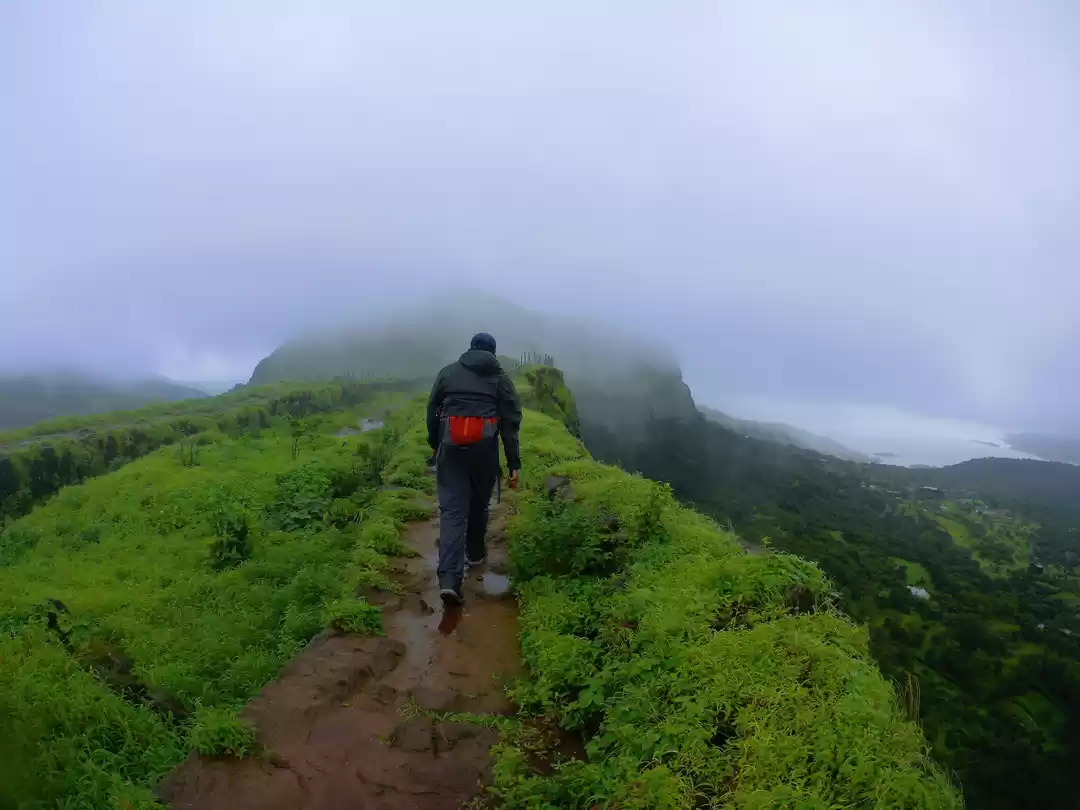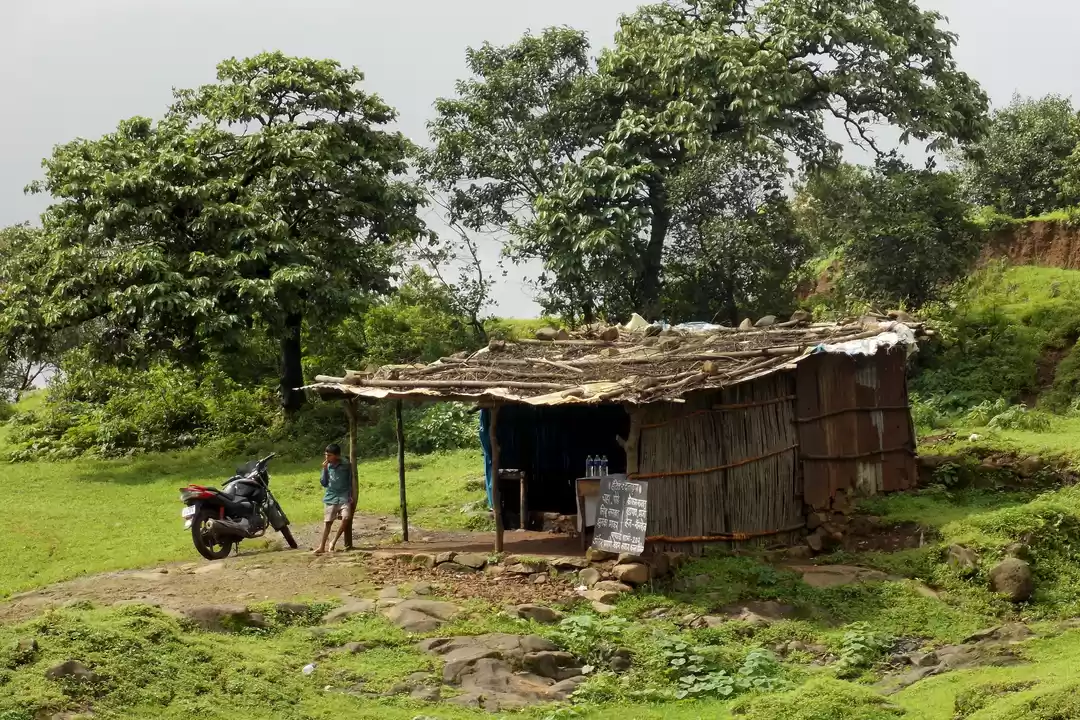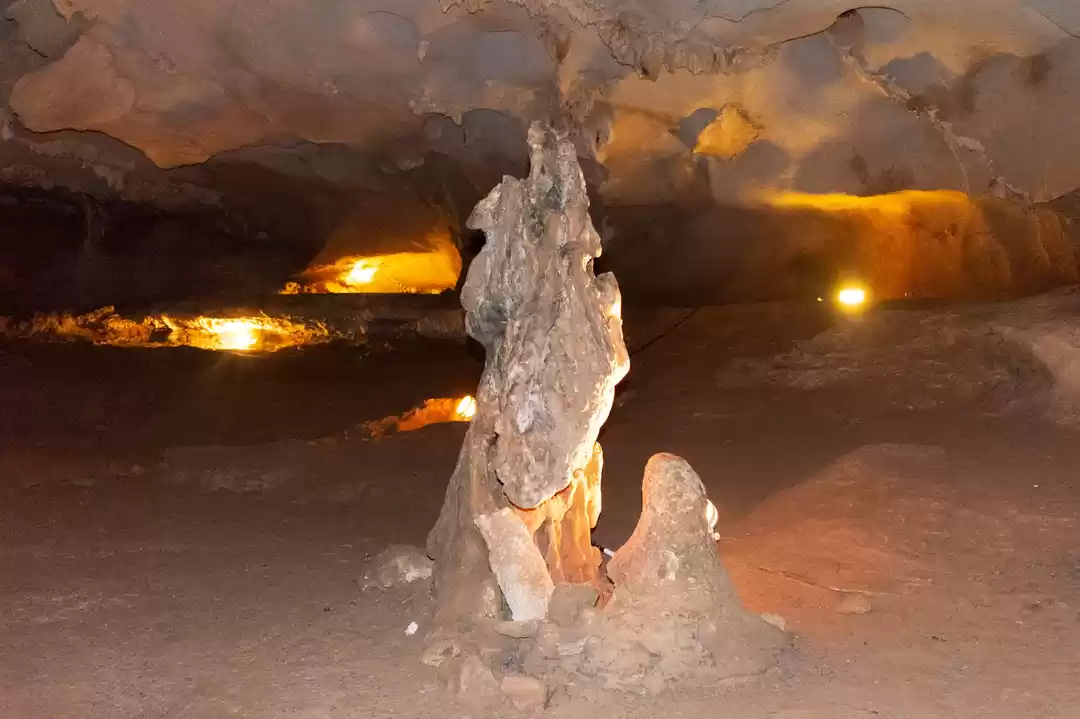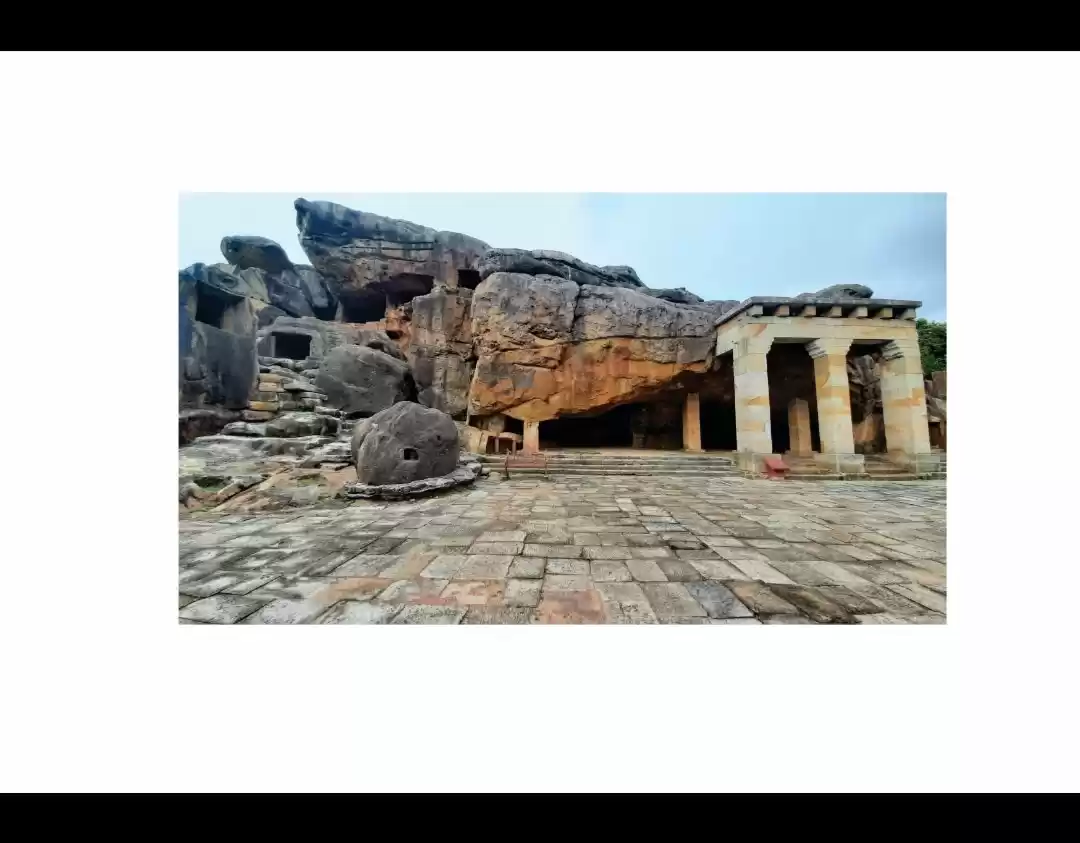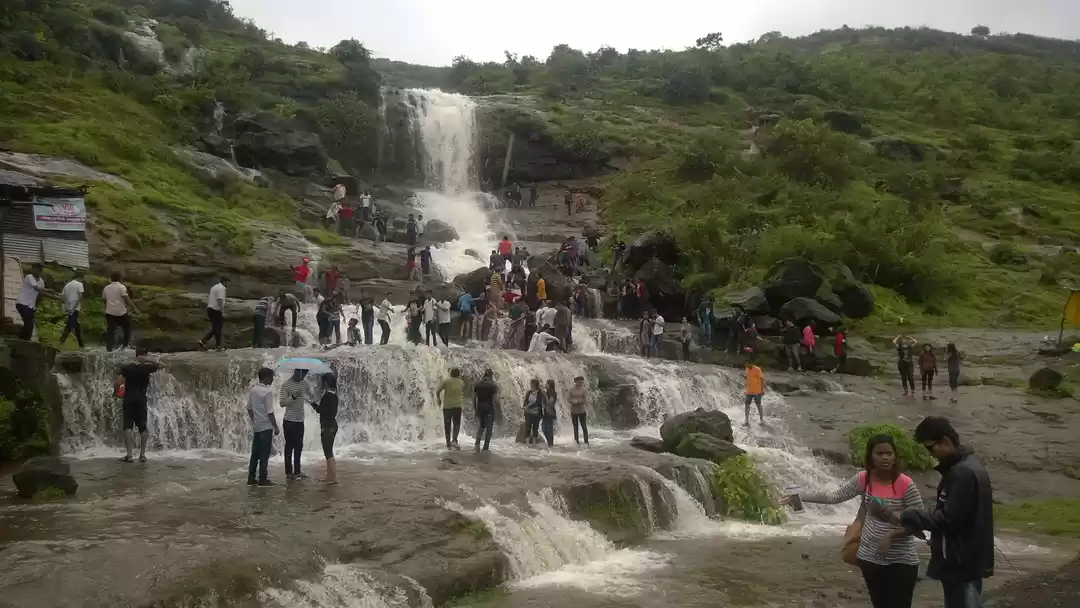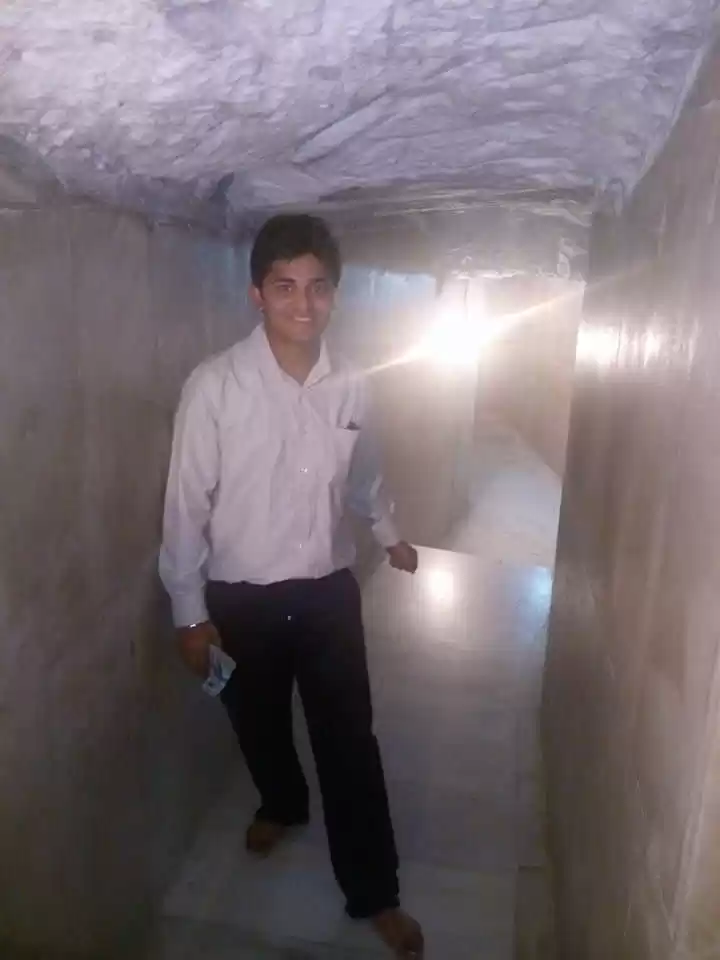If you are looking for a unique and fascinating destination to explore the ancient Indian culture and art, then you should not miss the Bhaja Caves. These are a group of 22 rock-cut caves that date back to the 2nd century BC and are located near Lonavala, a popular hill station in Maharashtra. The Bhaja Caves are among the oldest and finest examples of the Hinayana phase of Buddhism, and they showcase the remarkable skill and creativity of the ancient craftsmen. The caves are adorned with intricate carvings, paintings, and inscriptions that depict the royal and divine figures, the Buddhist teachings, and the social and religious life of the ancient times.
The caves also feature a stunning chaityagriha, a stupa, a monastery, and a wooden architecture that is rare and unique. The Bhaja Caves are not only a treasure trove of history and culture, but also a scenic spot that offers a panoramic view of the surrounding hills and valleys. The caves are also close to many other attractions that you can visit after exploring the caves, such as the Karla Caves, the Lohagad Fort, the Bhushi Dam, and the Wet N Joy Water Park. In this article, we will provide you with a comprehensive guide to the Bhaja Caves, covering various aspects such as their history, culture, architecture, art, location, timings, photos, and nearby attractions.
We will also provide you with some tips and suggestions to make your trip more enjoyable and memorable. Whether you are a history buff, a culture enthusiast, or a nature lover, you will find something to suit your interest and taste at the Bhaja Caves. So, read on and discover the beauty and the mystery of the Bhaja Caves.
History and Culture of Bhaja Caves
The Bhaja Caves are believed to be one of the earliest examples of the rock-cut architecture in India, and they belong to the Hinayana phase of Buddhism. The Hinayana phase, also known as the Theravada phase, was the first and the most orthodox form of Buddhism that emerged after the death of Gautama Buddha. The Hinayana phase focused on the individual salvation and the strict adherence to the monastic rules.
The Bhaja Caves were built by the Buddhist monks and the traders who used to travel along the ancient trade route that connected the Deccan Plateau with the Arabian Sea. The caves served as a place of worship, meditation, and residence for the monks and the pilgrims. The caves also reflect the influence of the Mauryan and the Satavahana dynasties that ruled over the region during the time of the caves’ construction. The caves are adorned with various inscriptions and sculptures that depict the royal and divine figures, such as the Buddha, the Bodhisattvas, the Vedic gods, and the kings.

The caves also depict the scenes from the Jataka tales, the stories of the Buddha’s previous lives, and the events from the contemporary society, such as the festivals, the dances, the music, and the warfare. The caves are a testimony to the rich and diverse culture and art of the ancient India, and they offer a glimpse into the life and the beliefs of the people who lived more than 2000 years ago.
Architecture and Art of Bhaja Caves
The Bhaja Caves are a marvel of the ancient Indian rock-cut architecture, and they showcase the remarkable skill and creativity of the ancient craftsmen. The caves are carved out of a single rock face, and they are arranged in a horseshoe shape around a central courtyard. The caves are divided into two groups: the chaitya group and the vihara group. The chaitya group consists of a single cave, which is the most impressive and important cave of the Bhaja Caves.
This cave is known as the chaityagriha, or the prayer hall, and it houses a magnificent stupa, or a hemispherical dome that represents the Buddha’s relics. The chaityagriha is 40 feet long and 15 feet high, and it has a vaulted ceiling that resembles a wooden roof. The ceiling is supported by 27 carved pillars that form an aisle around the stupa. The pillars are decorated with various motifs, such as the lotus, the elephant, the horse, and the human figures. The stupa is surrounded by a wooden railing that has a carved gate and a window. The gate and the window are adorned with the images of the Buddha, the Bodhisattvas, and the Vedic gods, such as Indra and Surya. The chaityagriha is considered to be one of the finest and oldest examples of the wooden architecture in India, and it is a rare and unique feature of the Bhaja Caves.

The vihara group consists of 18 caves, which are the residential and the educational quarters for the monks and the students. These caves are also known as the monastery, and they have a simple and plain design. The caves have a rectangular hall with a veranda and a cell at the back. The hall and the cell are used for meditation, study, and sleep. The veranda is used for social and religious activities. Some of the caves have inscriptions that mention the names and the donations of the patrons who sponsored the caves. Some of the caves also have paintings that depict the floral and the geometric patterns.
The most notable caves in the vihara group are cave 12, cave 18, cave 19, and cave 20. Cave 12 is the largest and the most elaborate cave in the vihara group, and it has 12 cells, a hall, and a veranda. Cave 18 is the only cave that has a shrine dedicated to a female figure, who is identified as either Hariti, the goddess of fertility, or Yakshi, the tree spirit. Cave 19 is the only cave that has a balcony that overlooks the valley and the waterfall. Cave 20 is the only cave that has a sculpture of a prince seated on an elephant, who is believed to be either Ashoka, the Mauryan emperor, or Nahapana, the Satavahana king.
How to Reach and Visit Bhaja Caves
The Bhaja Caves are located near Lonavala, a popular hill station in Maharashtra, and they are easily accessible by road, rail, or air. The caves are situated at a distance of about 12 km from Lonavala, 60 km from Pune, and 100 km from Mumbai. The best way to reach the Bhaja Caves is by road, as you can enjoy the scenic drive along the Mumbai-Pune Expressway and the Old Mumbai-Pune Highway. You can hire a taxi or a cab from Lonavala, Pune, or Mumbai, or you can drive your own vehicle to the caves. You can also take a bus from Lonavala, Pune, or Mumbai to Malavli, which is the nearest village to the caves, and then walk or take a rickshaw to the caves. If you prefer to travel by rail, you can take a train from Pune or Mumbai to Malavli, which is the nearest railway station to the caves, and then walk or take a rickshaw to the caves.
The trains are frequent and cheap, and they take about an hour to reach Malavli from Pune or Mumbai. If you want to travel by air, you can take a flight from any major city in India to Pune or Mumbai, which are the nearest airports to the caves, and then take a taxi or a cab to the caves. The flights are regular and convenient, and they take about an hour to reach Pune or Mumbai from any major city in India. The Bhaja Caves are open to the public from 9 am to 5 pm every day, and they charge a nominal entry fee of Rs. 25 for Indian nationals and Rs. 300 for foreign nationals. The caves are well-maintained and have basic facilities, such as toilets, drinking water, and parking. The caves are also wheelchair-friendly and have ramps and railings for the disabled visitors.
The caves are located on a hilltop, and they require a moderate level of fitness and stamina to reach them. You have to climb about 200 steps from the base to the entrance of the caves, and then walk along a narrow and uneven path to explore the caves. The climb and the walk may take about 30 to 45 minutes, depending on your pace and your interest. You should wear comfortable shoes and clothes, and carry a hat, a sunscreen, a water bottle, and a camera when you visit the caves. You should also respect the sanctity and the beauty of the caves, and avoid littering, smoking, or making noise when you visit the caves.
Best Time to Visit Bhaja Caves
The best time to visit the Bhaja Caves is during the monsoon season, which lasts from June to September. The monsoon season brings a refreshing and a romantic charm to the caves, as the hills and the valleys turn green and lush, and the waterfall near the caves becomes active and spectacular. The monsoon season also offers a pleasant and a cool climate, and a lower crowd, making it ideal for exploring the caves and enjoying the nature.
The monsoon season also coincides with some of the important festivals and events that are celebrated at the caves, such as the Buddha Purna, the full moon day that marks the Buddha’s first sermon, and the Ashadha Purnima, the full moon day that marks the Buddha’s death anniversary. The monsoon season is also a good time to witness the fireflies that light up the night sky near the caves, creating a magical and a mesmerizing sight.

However, the monsoon season also brings some challenges and risks, such as the slippery and muddy roads, the landslides, the leeches, and the insects. You should be careful and cautious when you visit the caves during the monsoon season, and check the weather and the road conditions before you plan your trip. You should also carry a raincoat, an umbrella, a torch, and a first-aid kit when you visit the caves during the monsoon season.
The winter season, which lasts from October to February, is another good time to visit the Bhaja Caves. The winter season offers a pleasant and a mild climate, and a clear and a sunny sky, making it ideal for exploring the caves and enjoying the nature. The winter season also coincides with some of the important festivals and events that are celebrated at the caves, such as the Diwali, the festival of lights, and the Makar Sankranti, the harvest festival. The winter season also offers a higher crowd and a festive atmosphere, making it ideal for socializing and mingling with the locals and the tourists.
However, the winter season also brings some challenges and risks, such as the cold and the foggy mornings, the higher prices, and the longer queues. You should be prepared and patient when you visit the caves during the winter season, and book your tickets and your accommodation in advance. You should also carry a sweater, a cap, a scarf, and a sunscreen when you visit the caves during the winter season.
The summer season, which lasts from March to May, is the least preferred time to visit the Bhaja Caves. The summer season brings a hot and a humid climate, and a dusty and a hazy sky, making it uncomfortable and unpleasant to explore the caves and enjoy the nature. The summer season also offers a lower crowd and a quieter atmosphere, making it ideal for those who want to avoid the rush and the noise. However, the summer season also brings some challenges and risks, such as the dehydration, the heatstroke, and the sunburn. You should be careful and cautious when you visit the caves during the summer season, and avoid the peak hours and the direct sunlight. You should also carry a lot of water, a hat, a sunglasses, and a cooling spray when you visit the caves during the summer season.
Places to Visit Near Bhaja Caves
The Bhaja Caves are not only a destination in themselves, but also a gateway to many other attractions that you can visit after exploring the caves. These attractions are located within a short distance from the caves, and they offer a variety of experiences and activities for the visitors. Here are some of the places that you can visit near the Bhaja Caves:

Karla Caves:
The Karla Caves are another group of ancient Buddhist rock-cut caves that are located about 10 km from the Bhaja Caves. The Karla Caves are similar to the Bhaja Caves in terms of their history, culture, architecture, and art, but they are larger and more elaborate. The Karla Caves are famous for their grand chaityagriha, which is the largest and the most impressive in India. The chaityagriha is 45 feet high and 124 feet long, and it has 37 carved pillars that support a wooden roof. The chaityagriha also has a magnificent facade that features a huge horseshoe-shaped arch and a carved gate. The gate is adorned with the images of the Buddha, the Bodhisattvas, the Vedic gods, and the lions.
The Karla Caves are also known for their Ekvira Devi Temple, which is a Hindu temple dedicated to the goddess Ekvira, who is worshipped by the local fishermen community. The temple is located on the top of the hill, and it offers a splendid view of the valley and the lake. The Karla Caves are a must-visit for those who want to witness the ancient Indian rock-cut architecture and art at its best.

Lohagad Fort:
The Lohagad Fort is a historical fort that is located about 15 km from the Bhaja Caves. The Lohagad Fort was built by the Chalukya dynasty in the 11th century, and it was later occupied by various rulers, such as the Yadavas, the Bahamanis, the Nizams, the Mughals, the Marathas, and the British. The Lohagad Fort is situated on a hilltop, and it is surrounded by four massive gates that are named after the four directions: the Ganesh Darwaza, the Narayan Darwaza, the Hanuman Darwaza, and the Maha Darwaza.
The fort also has several structures and monuments, such as the Lohagad Palace, the Lohagad Lake, the Lohagad Tomb, and the Vinchu Kata. The fort also offers a panoramic view of the surrounding hills and valleys, and it is a popular spot for trekking and camping. The Lohagad Fort is a must-visit for those who want to experience the historical and the adventurous side of Lonavala.
Bhushi Dam:
The Bhushi Dam is a man-made dam that is located about 20 km from the Bhaja Caves. The Bhushi Dam was built in the 1860s by the British, and it is used for irrigation and power generation. The Bhushi Dam is famous for its scenic beauty and its fun-filled activities. The dam has a large reservoir that fills up with water during the monsoon season, and it creates a waterfall that flows over the steps of the dam. The waterfall is a popular attraction for the visitors, who enjoy splashing and swimming in the water. The dam also has a park and a garden that are ideal for relaxing and picnicking. The dam also has some stalls and shops that sell snacks, drinks, and souvenirs. The Bhushi Dam is a must-visit for those who want to have a refreshing and a relaxing time in Lonavala.

Wet N Joy Water Park:
The Wet N Joy Water Park is a fun-filled water park that is located about 25 km from the Bhaja Caves. The Wet N Joy Water Park is the largest water park in Lonavala, and it has a variety of rides and attractions for all ages and preferences. The water park has a wave pool, a lazy river, a rain dance, a kids zone, and several slides and coasters, such as the Cyclone, the Whizzard, the Boomerango, and the Extreme Volcano. The water park also has a food court and a souvenir shop that cater to the visitors’ needs and wants. The water park is a must-visit for those who want to have a thrilling and a fun time in Lonavala.
The Bhaja Caves are a hidden gem in Lonavala, and they are a perfect destination for those who love history, culture, art, and nature. The caves are a testimony to the ancient Indian rock-cut architecture and art, and they offer a glimpse into the life and the beliefs of the people who lived more than 2000 years ago. The caves are also a scenic spot that offers a panoramic view of the surrounding hills and valleys, and they are close to many other attractions that you can visit after exploring the caves.
The caves are open to the public from 9 am to 5 pm every day, and they charge a nominal entry fee of Rs. 25 for Indian nationals and Rs. 300 for foreign nationals. The best time to visit the caves is during the monsoon season, which lasts from June to September, as the caves become more beautiful and lively during this time. However, you can also visit the caves during the winter season, which lasts from October to February, or the summer season, which lasts from March to May, depending on your preference and convenience. The caves are easily accessible by road, rail, or air, and they have basic facilities, such as toilets, drinking water, and parking.
The caves are also wheelchair-friendly and have ramps and railings for the disabled visitors. The caves are located on a hilltop, and they require a moderate level of fitness and stamina to reach them. You have to climb about 200 steps from the base to the entrance of the caves, and then walk along a narrow and uneven path to explore the caves. You should wear comfortable shoes and clothes, and carry a hat, a sunscreen, a water bottle, and a camera when you visit the caves.
You should also respect the sanctity and the beauty of the caves, and avoid littering, smoking, or making noise when you visit the caves. If you are looking for a unique and fascinating destination to explore the ancient Indian culture and art, then you should not miss the Bhaja Caves. The caves are a treasure trove of history and culture, and they offer a variety of experiences and activities for the visitors. Whether you are a history buff, a culture enthusiast, or a nature lover, you will find something to suit your interest and taste at the Bhaja Caves.
So, what are you waiting for? Book your tickets and your accommodation now, and plan your trip to the Bhaja Caves. You will not regret it.
























